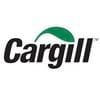Effect of Tilmicosin in the lactation diet of sows after an unplanned exposure to PRRS
Published: March 28, 2025
Source : D. Nolan 1,*, C. Sparks 1, I. Cormier 2, K. Herkelman 3 / 1 Huvepharma, Inc., Peachtree City, GA, United States; 2 CRF Research Council, Frampton, QC, Canada; 3 CRF Research Council, Richmond, VA, United States.
Summary
Keywords: PRRS control, tilmicosin
Introduction:
The objective of this experiment was to evaluate the effect of tilmicosin in the lactation diet of sows on sow and litter performance after an unplanned exposure to PPRS.
Materials and Methods:
One hundred ninety Sogeporc hybrid (Yorkshire-Landrace, 50:50) sows were blocked based on parity (1st, 2nd, 3rd or more), weight and P2 back fat thickness at farrowing assigned to one of two dietary treatments in a randomized complete block design. Two lactation turns were used and data were analyzed with turn as a dependent variable. Sows were fed a standard lactation diet (Control) or the Control + 200 ppm of tilmicosin. Tilmicosin was added as Tilmovet Premix (200g/kg) at 0.10% of the diet and replaced corn.
Results:
Sows fed tilmicosin had greater total born 12.81 vs 13.99 (P < 0.04) and numerically more live born 11.52 vs 12.33 (P < 0.17). Sows fed diets with tilmicosin had more pigs post cross-fostering, 10.71 vs 11.96 (P < 0.001), suggesting that less pigs died between birth and cross fostering. Sows fed tilmicosin had more pigs post cross-fostering 11.52 vs 12.33 (P < 0.001). Sows fed tilmicosin had more pigs weaned as well, 10.02 vs 11.17 (P< 0.0001). Although this is partially because they had more born alive, it is also because they had less pigs die 1.50 vs 1.16, with the biggest difference in death loss coming prior to cross-fostering. Sows fed the Control diet weaned heavier pigs 6.92 vs 6.66 kg/hd (P < 0.02), but had a lighter total litter weight, 69.52 vs 74.36 kg (P < .03), compared to sows fed diets with tilmicosin. Weaning weight (P < 0.02), pig weight gain (P < 0.02), and pig daily gain (P < 0.03) all have a diet x lactation turn interaction with the first turn having a greater advantage for feeding tilmicosin over the second turn. Dietary tilmicosin improved the lactation efficiency and gain:feed of sows (P< 0.05). Sows fed tilmicosin lost less weight during lactation, 10.6 vs 5.2 kg. (P < 0.05). There was an interaction between lactation turns for sow weight loss. Sows in the first turn lost less weight during lactation when tilmicosin was added to the diet, but there was no difference in weight change during lactation between treatments in second turn, (diet x turn, P < 0.01).
Conclusion:
Tilmicosin improved the health, livability and litter weights of the weaned pigs following an unplanned herd exposure to PRRS.
Disclosure of Interest: D. Nolan Conflict with: Huvepharma, Inc., C. Sparks Conflict with: Huvepharma, Inc., I. Cormier: None Declared, K. Herkelman: None Declared.
Published in the proceedings of the International Pig Veterinary Society Congress – IPVS2016. For information on the event, past and future editions, check out https://www.theipvs.com/future-congresses/.
Content from the event:
Related topics:
Recommend
Comment
Share

Would you like to discuss another topic? Create a new post to engage with experts in the community.









